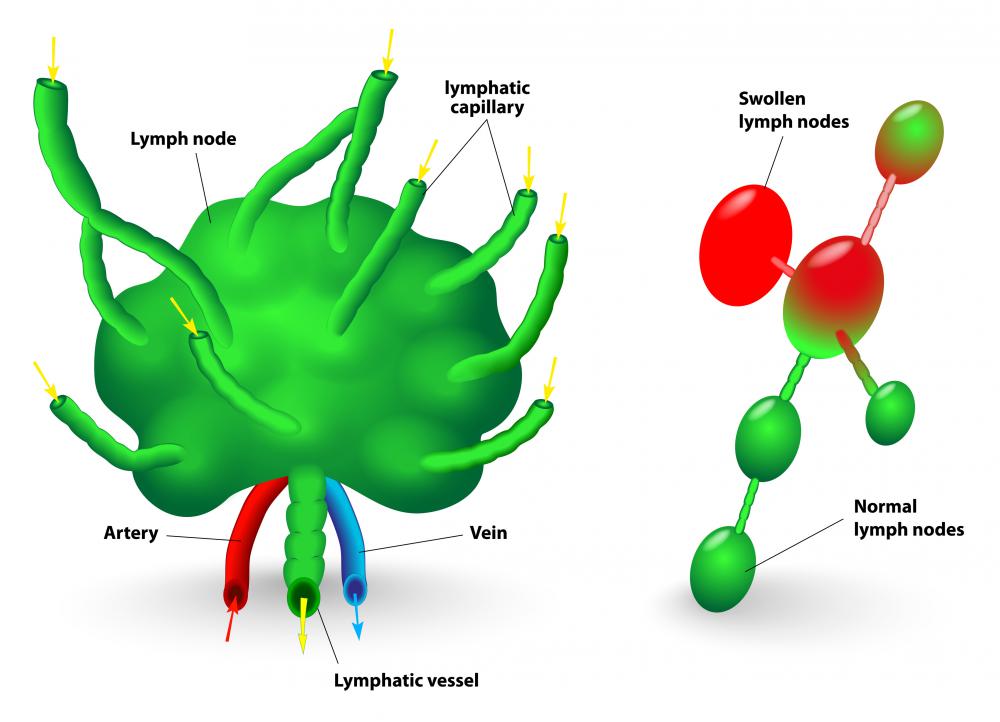At TheHealthBoard, we're committed to delivering accurate, trustworthy information. Our expert-authored content is rigorously fact-checked and sourced from credible authorities. Discover how we uphold the highest standards in providing you with reliable knowledge.
What is an Axillary Dissection?
The term axillary dissection refers to a surgical procedure in which the axilla (armpit area) is opened to expose and remove the small glands that are found there. The small glands that are found in the armpit area are often referred to as lymph nodes. These lymph nodes are an integral part of the lymphatic system because they are responsible for filtering fluid from cells. This filtered fluid is then added back into the bloodstream to be circulated throughout the body.
An axillary node dissection is often performed during breast cancer surgery. This procedure is done to determine how far the cancer has spread. If the cancer has spread to the lymph nodes under the arm there is a chance it can spread throughout the entire body through the lymphatic system. The best outcome would be to find no cancer in the lymph nodes that are removed.

There are three levels of axillary lymph nodes. These levels are determined by noting their location in relation to the pectoralis minor muscle. This muscle is on the front of the chest. It starts at the third, fourth and fifth rib and runs up to the top of the shoulder.
Level-one axillary lymph nodes are located along the bottom edge of the pectoralis minor muscle. Level-two nodes are underneath this muscle and level- three nodes are located on the top edge of the muscle. An axillary dissection usually involves taking the lymph nodes from level one and level two. If the surgeon suspects advanced breast cancer, he may remove the lymph nodes at level three also.

It is common practice for an axillary dissection to be performed under general anesthesia. Typically, the surgeon will make a small two- or three-inch (5.08-7.62 cm)incision in the crease of the armpit. He will then remove the fatty tissue that contains the lymph nodes. This tissue is sent to a lab where the lymph nodes will be extracted and tested for cancerous cells.

Recovery time after an axillary dissection is usually four to six weeks. During this time, the affected arm should be massaged and put through gentle range-of-motion exercises. Great care should be taken to avoid cuts or other injury to the surgical arm. The surgeon may also have the individual wear a compression garment on the affected arm to prevent swelling.

Complications can sometimes occur after an axillary dissection. Some individuals have reported a loss of sensation in back of the arm and the armpit. Swelling of the arm is another complication that can occur after axillary lymph node dissection. Occasionally, the veins that run up the arm can become inflamed or a blood clot can develop in the vein. In most cases, these complications can easily be treated.
AS FEATURED ON:
AS FEATURED ON:














Discuss this Article
Post your comments